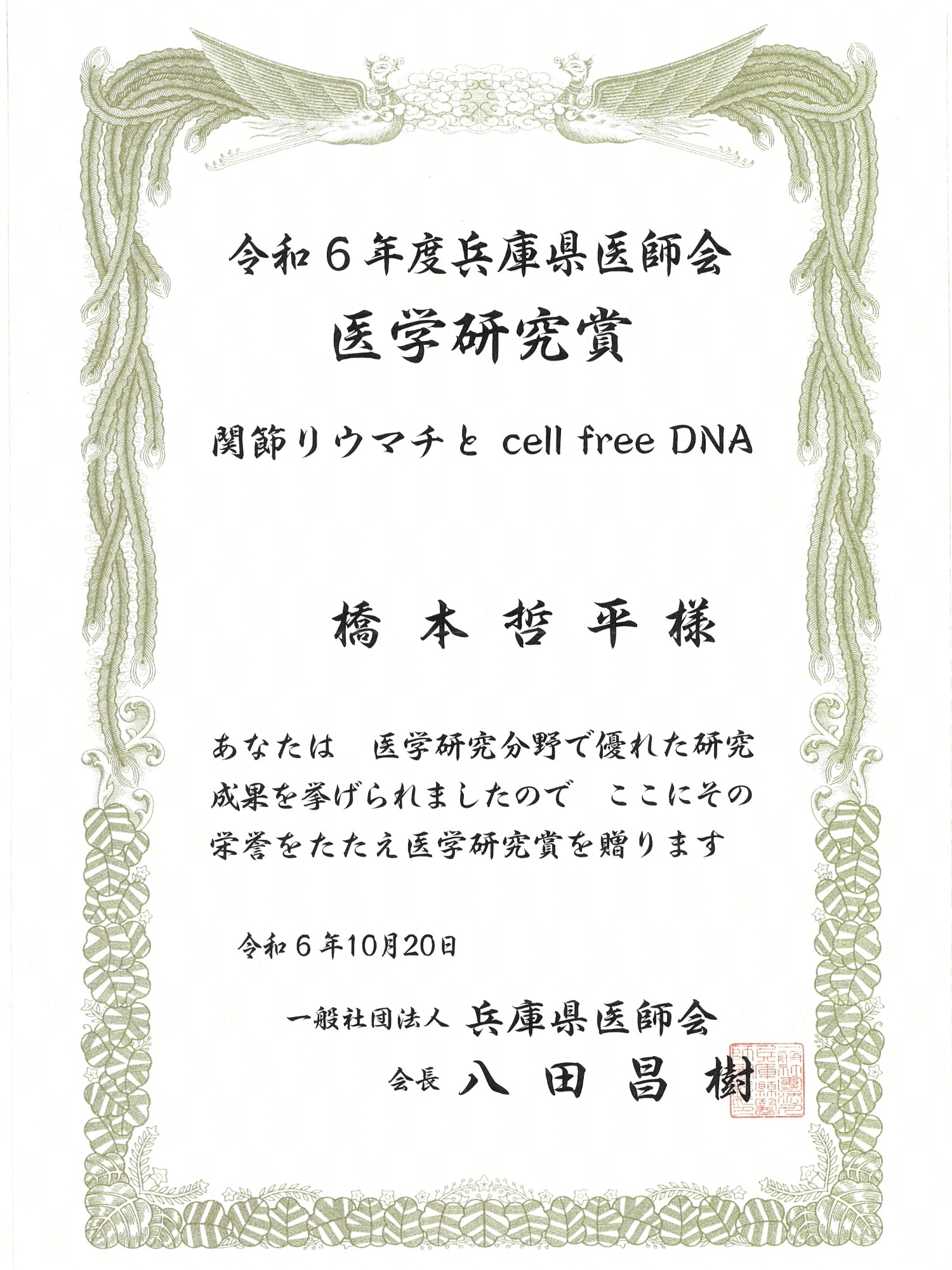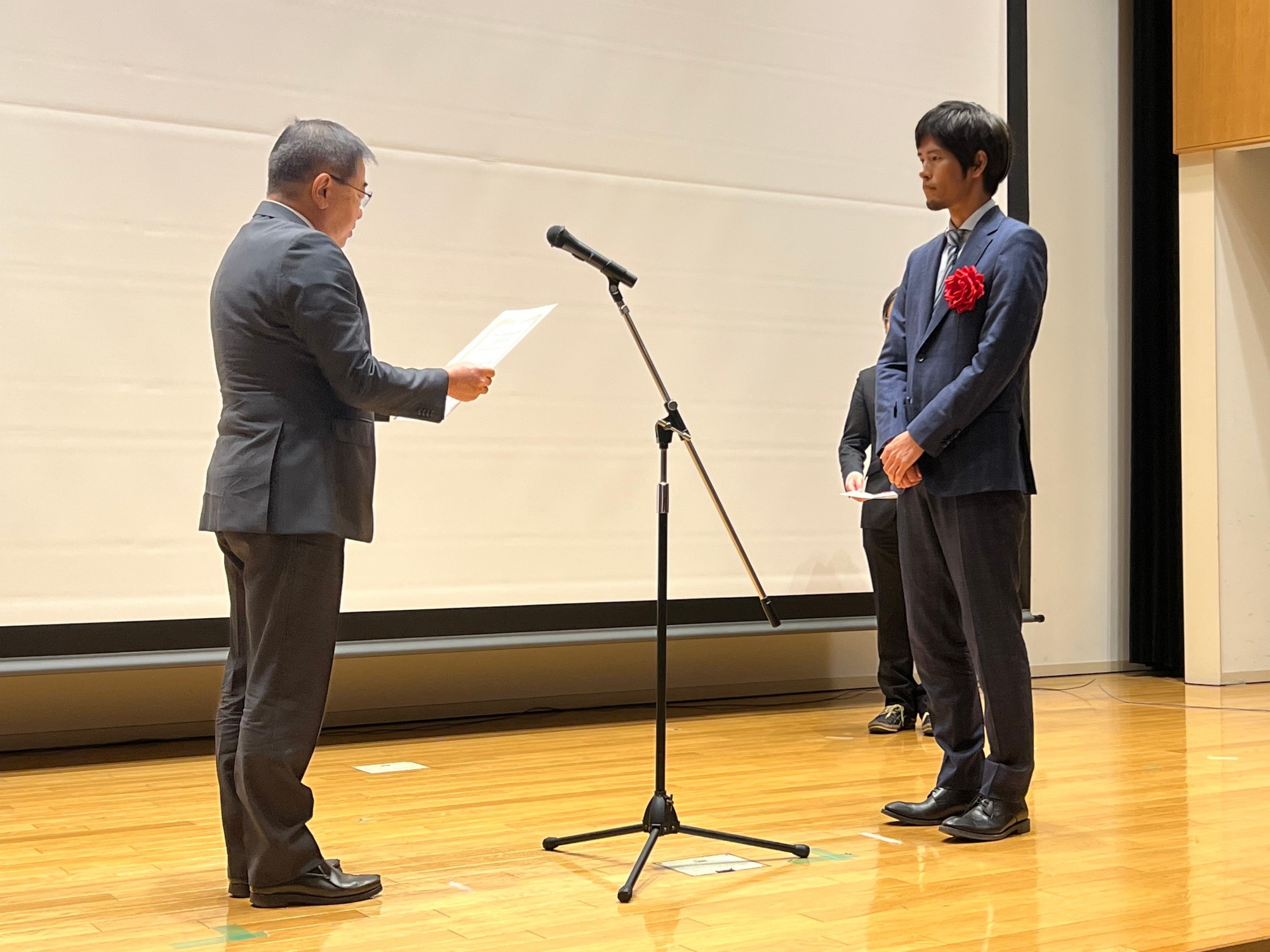Awards
Hyogo Prefectural Medical Association Medical Research Award for 2024 (Teppei Hashimoto, Lecturer Department of Diabetes Endocrinology and Clinical Immunology)
Teppei Hashimoto, lecturer Department of Diabetes Endocrinology and Clinical Immunology has been awarded the Hyogo Prefectural Medical Association Medical Research Award for FY2024. This award is given to those who have achieved outstanding research results in the field of medical research.
Name of the awarding organization
Hyogo Prefectural Medical Association
Research topic
Rheumatoid arthritis and cell free DNA
Research Overview
In this study, we demonstrated that cell free DNA (cfDNA) is released by the proliferation of synovial cells in rheumatoid arthritis (RA) patients, and induces inflammation via the Toll-like receptor 9 (TLR9) pathway, and that tocilizumab (TCZ), a drug for rheumatoid arthritis, suppresses inflammatory cytokines induced by cfDNA by directly reducing cfDNA. This clarified the pathogenesis of inflammation caused by self-DNA recognition in RA and a new mechanism of the effect of TCZ.
Research Background
cfDNA is a DNA fragment released outside the cell following cell death. We have reported an increase in cfDNA in peripheral blood and synovial fluid of RA patients, but it was unclear how it was produced and related to the disease. Therefore, this study aimed to clarify the relationship between cfDNA and disease activity in RA, and the mechanism of cfDNA production and its role.
Research methods and results
[Research Methods]
In 136 RA patients (77 TCZ patients, 59 TNF-I patients) who started treatment with TCZ or TNF inhibitors (TNF-I), plasma cfDNA was measured by quantitative PCR before and 4 and 12 weeks after the start of treatment to evaluate the relationship with disease activity. We also investigated the mechanism of cfDNA production by RA synovial cells in vitro, the involvement of cfDNA in inflammation, and changes due to treatment.
[Research Results]
There was no difference in disease activity before the start of treatment between the TCZ group and the TNF-I group, and disease activity improved significantly in both groups at 12 weeks, but cfDNA concentration decreased only in the TCZ group. In particular, in patients with no history of use of biologics, cfDNA concentration correlated with disease activity only in the TCZ group (r=0.52, p<0.01), and cfDNA concentration was significantly lower in patients in remission.
In vitro, cfDNA increased with synovial cell proliferation, reached a plateau when cell division ceased, and then gradually decreased. When TCZ or TNF-I was added, cfDNA significantly decreased only with the addition of TCZ, similar to the clinical results. Neither drug had any effect on the cell cycle, and the addition of TCZ to pure cfDNA also reduced cfDNA, suggesting that TCZ acts directly on DNA as a DNA abzyme. RA-cfDNA also activated the TLR9 pathway and induced inflammatory cytokines, which were inhibited by TCZ.
In RA patients, cfDNA is released by the proliferation of synovial cells and induces inflammation via the TLR9 pathway. It was suggested that TCZ may suppress this inflammation by reducing cfDNA, thereby improving the pathology of RA.
Future challenges
It has been suggested that cfDNA affects the inflammatory pathology of RA, but further investigation is needed to determine whether suppressing it actually improves RA synovitis.
Publication
Clinical and Experimental Immunology

